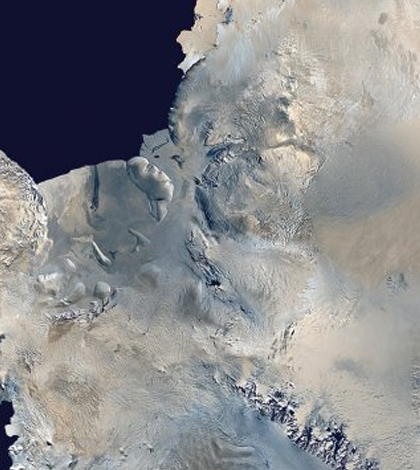Antarctic Ice Sheets Weakened By ‘Upside-Down Rivers’

Antarctic ice sheets. (Credit: NASA)
Antarctic ice sheets are very vulnerable to climate change, scientists say, because they feel its impacts from above and below. Warmer air temperatures come down at them, while warmed ocean waters are creating areas of heated ocean water that wear ridges into the sheets.
Researchers at the University of Colorado call these ridges “upside-down rivers” and have been tracking some of their effects. One of the clearest, they say, is the weakening of ice shelves. To make the find, scientists mapped parts of the Antarctic using satellite data as well as laser altimetry, which measures the height of ice shelves with high accuracy.
The mapping efforts revealed that warm, “upside-down rivers” have a tendency to form along the edges of islands and peninsulas. And there were two areas that researchers pinpointed as fracturing along the weakened spots, adding to evidence that they can make ice shelves more likely to break.
Top image: Antarctic ice sheets. (Credit: NASA)




0 comments